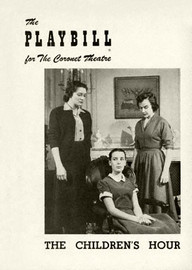Time to Support Women Artists
- LB Playwright
- Mar 29, 2019
- 4 min read

March is Women’s History Month, so it is the perfect time to remind ourselves how important it is for the voices of women playwrights to be heard. Women’s stories must be produced.
Theater, like most industries, has typically been dominated by straight, white men. Their plays, that center mainly around straight, white men, are produced more often than plays written by women. I have been fortunate to see many plays and musicals throughout my life, and the only time I have ever seen theater works that feature a strong, female character, is, well, never. I am only relatively well-versed regarding women playwrights because I am an avid reader (though I really need to read more plays by minorities). It is so unfortunate that the work of women is not often produced because these are the plays that I really connect to. But also, truthfully, many of my favorite plays have been written by men, and as a society we are exposed more to male writers than women writers.
The works of women of color are produced even less often than white women's works, and this is not remotely okay. The beauty of theater is being able to see yourself on stage; however, when the voices of women of color, trans women, disabled women, etc., are silenced, we eliminate a huge population that deserves to see themselves on stage.
Writers, producers, and directors may think they are satisfying viewers by having the main male character have a strong, female love interest, but that is not true. Women are so much more than love interests, and we deserve plays that star women and have men as the supporting characters (or do not have men in them at all).

I know this is going to be tough for straight, white, cis men, who are used to seeing themselves on stage. My senior thesis play focused on a relationship between a Girl and a Boy, and was told from the point-of-view of the Girl. Though it is a two-person play, Girl is the main character, and everything is seen and discussed through her eyes. It was very important to me to write a play that people could connect to, and the fact that women came up to me afterwards to tell me how much they related to Girl and the story, meant the world to me. However, there was some pushback from male viewers. I was told by one man that he thought the character of Girl was “too whiny” and the character of Boy was “just there.” There are two main take-aways from this statement.
Firstly, calling Girl “too whiny” is very sexist and demonstrates a larger societal issue regarding women and relationships, which is too deep of a topic to go into right now. The second part of the man’s statement is important in relation to theater. By saying he felt that Boy was “just there,” he was saying that Boy did not have a chance to give his side of the story and was not a developed character. He is not wrong. I purposely made Boy a very secondary character, and I did not want him to grow because many people do not change, which was one of the main points of my play. So, in those ways, this male audience member was right.

However, what he does not realize is that how Boy is portrayed in my play is how women have always been portrayed in works of art. Women’s roles are “just there” for men to fawn over and to encourage men to reach for the stars (i.e. the manic pixie dream girl trope). These characters have no substance and we have become so used to that norm that when a play decides to flip the script, we are taken aback. A play that features a woman and a secondary male character is an anomaly, and can be subject to criticism (as my play was), as men do not want to see secondary male characters. But guess what? Women do not want to see secondary female characters either. And do you know how we fix this problem? By producing plays written by women and starring women.
The theater world has always prided itself on being an inclusive and diverse industry, but we are not. We are not diverse on stage or behind-the-scenes. We need more women directors, especially when it comes to directing women’s stories. And we need all women to be represented, not just white, straight, cis women. That means if a play is about a black family, like in Lorraine Hansberry’s A Raisin in the Sun, it should be directed by a black woman (or at least a black man). [Need a reminder about what intersectional feminism is? Check out my past post – “Let’s Talk About Feminism, Privileged White Women, and Sexism”]. It would also be wonderful to see more women in roles such as stage manager, lighting designer, scenic designer, etc. One of the ways to have diversity on stage is to also have more women in administrative roles and in positions of power. This will help ensure that women’s stories are being told because women will be at the helm. Basically, we need more women in all roles.
The theater world has a long, long ways to go, and we need to start producing work written by, directed by, and starring marginalized people. We need to share stories from voices that are often excluded, and we need it now.
Want to read more plays written by women? Check out my list below of suggested women playwrights.
March 29, 2019
There are many, many, many more women playwrights, just these are the women whose work I have read.
Have any suggestions for more? Subscribe to my mailing list to let me know or email me at 15minuteintermission@gmail.com and I will add them to the list.
Women Playwrights
1. Catherine Butterfield
2. Alice Childress
3. Caryl Churchill
4. Lillian Hellman
5. Lorraine Hansberry
6. Edna Ferber
7. Maria Irene Fornes
8. Ruth Goetz
9. Muriel Miguel
10. Marsha Norman
11. Dawn Powell
12. Theresa Rebeck
13. Sarah Ruhl
14. Ntozake Shange
15. Lucy Thurber
16. Paula Vogel
17. Mae West
18. Wendy Wasserstein
19. Maurine Dallas Watkins
Images
https://www.amazon.com/Plays-about-Women-Victoria-Sullivan/dp/0394718968



















Comments